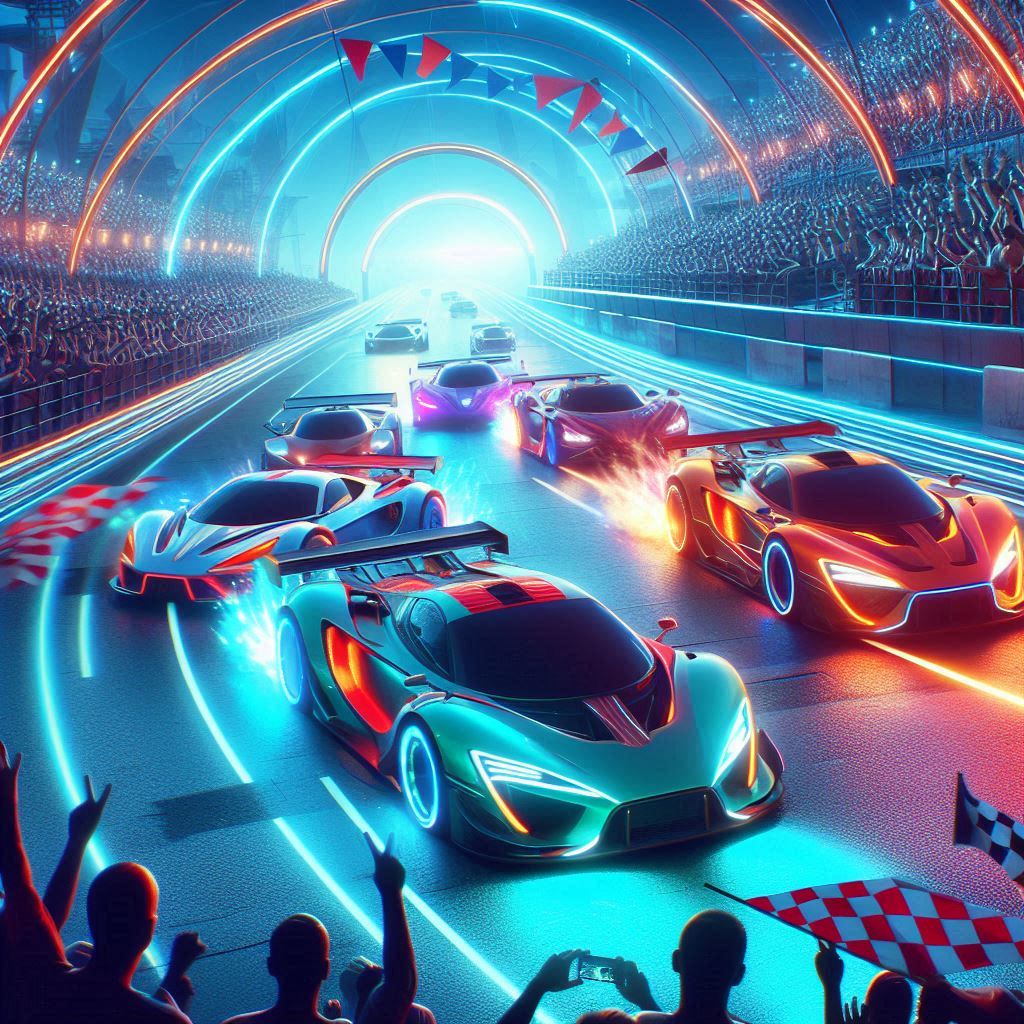Technology Behind Infrared Racing
Infrared racing is exciting. It is a type of racing where cars are controlled by infrared light. This sport is growing fast. It is fun and very precise. Infrared racing is more controlled than regular racing. It uses technology that makes it faster and safer. In this article, we will talk about how infrared racing works, its benefits, and why it is so popular.
What Is Infrared Racing?
Infrared racing uses infrared light to control cars. This is different from traditional racing. Instead of using physical controls, infrared sensors guide the cars. The sensors send and receive signals that make the cars move. This makes the race smoother and more exciting.
Key Features of Infrared Racing
- Infrared Signals: The most important part is the infrared signal. These signals are used to control the cars.
- Sensors on the Cars: Small sensors on the cars pick up the signals. They help steer the cars and control their speed.
- No Drivers: Unlike traditional racing, no one drives the cars. This makes it unique.
Infrared racing is easy to understand and fun to watch. It can be done indoors and outdoors, making it versatile.
How Does Infrared Racing Work?
Infrared racing works through light signals. A device sends infrared light. The cars have sensors that pick up the signals. When the car gets a signal, it speeds up or slows down. The sensors also help the car turn.
Infrared Technology
Infrared technology is used in many things, like remote controls. It works by sending light that can’t be seen. The car sensors catch this light. The car then follows the instructions sent by the signal.
Car Movement
The movement of the car is controlled by the signals. The system can control speed and direction. This makes the cars easier to handle and more accurate. Drivers do not need to make sharp turns. The system helps with this.

The Benefits of Infrared Racing
Infrared racing has many benefits. It is safe, fun, and accurate. Here are some of the main advantages:
1. More Accuracy and Precision
Infrared racing is known for its precision. The infrared signals are very accurate. This allows for smoother turns and faster speeds. There is less room for error in the race.
2. Safer for Participants
Safety is a big benefit. Since there are no drivers in the cars, there are fewer risks. The cars are smaller and lighter, making crashes less dangerous.
3. Better Control
Infrared systems allow for better control. The cars respond quickly to signals. This makes the race more exciting and fun to watch.
4. Environmentally Friendly
Most infrared racing cars use electricity. They are more eco-friendly than traditional gas-powered cars. This helps reduce pollution and protect the environment.
5. Less Maintenance
Infrared racing cars need less maintenance. They have fewer parts that wear out. This makes the sport cheaper to maintain.

Infrared Racing vs. Traditional Racing
Infrared racing is different from traditional racing in many ways. While traditional races use gas-powered cars, infrared racing uses electric ones. There are no drivers in infrared racing, which changes how the race is run.
Differences in Speed: Infrared Racing vs. Traditional Racing
When we talk about speed in racing, there are important differences between infrared racing and traditional racing. Infrared racing cars are exciting, but they do not reach the same high speeds as traditional racing cars. Let’s break this down further.
Infrared Racing Speed
Infrared racing cars are not built to be as fast as traditional race cars. These cars are typically much smaller and lighter. They use electric motors, which provide quick acceleration but don’t generate the extreme top speeds you see in traditional racing.
- Maximum Speed: Infrared racing cars usually top out around 30 to 60 miles per hour, depending on the type of car and track. While this is fast for remote-controlled cars, it’s much slower compared to traditional cars.
- Control Over Speed: The advantage of infrared racing is how precise the control is. The use of infrared technology helps drivers maintain smooth and steady speeds. There is less focus on hitting extreme speeds and more on precision racing.
Traditional Racing Speed
Traditional racing, like Formula 1 or NASCAR, is all about high speeds. These cars are built for one main thing: going as fast as possible. The engines in traditional racing cars are powered by fuel, which allows them to reach speeds far beyond what infrared cars can achieve.
- Maximum Speed: Traditional race cars can reach speeds of over 200 miles per hour. For example, Formula 1 cars can reach speeds of about 230 miles per hour on a straight track.
- Built for Speed: The main focus of traditional racing is on high performance, so these cars are designed to handle extreme speeds. They are equipped with powerful engines and aerodynamics to minimize drag and maximize speed.
Comparison of Speed in Both Races
While traditional racing is all about speed, infrared racing focuses on control and precision. The infrared system in the cars allows them to move quickly, but they do not compete in terms of sheer top speed with traditional racing cars.
- Speed Limits: Infrared racing is best known for its precision. The maximum speed is lower than traditional racing, but it allows the sport to be more accessible. Traditional racing is about pushing limits and speed records.
- Speed Control: In infrared racing, the speed is often controlled with great precision through the infrared signals. In traditional racing, speed is controlled by the driver’s skills and the car’s capabilities, often requiring manual adjustments.

Speed and the Racing Experience
In traditional racing, watching cars zoom at high speeds gives fans a sense of thrill and excitement. However, in infrared racing, the challenge is more about strategy and accuracy. The focus is on the track design, car handling, and maneuvering within tight spaces. While it is not about going as fast as possible, it is still thrilling in its own way because the cars are so precise.
To sum up, infrared racing and traditional racing differ significantly in speed. Traditional racing is all about fast cars and pushing the limits, while infrared racing is about controlled speed and precision. Both types of racing offer unique thrills but for different reasons. Infrared racing may not have the extreme speeds of Formula 1, but it excels in accuracy and safety, making it a great alternative for those looking for a different kind of racing experience.
Cost Comparison
Infrared racing is cheaper. Traditional racing requires expensive cars and a lot of maintenance. Infrared racing uses simpler cars that are easier to take care of. This makes infrared racing more affordable for everyone.
Safety and Control
Infrared racing is much safer. Since there are no human drivers, the risk of injury is lower. Also, the infrared system provides better control, reducing crashes.
Infrared Racing Equipment
Infrared racing needs specific equipment to work. Let’s look at the key parts of infrared racing:
1. Cars
Infrared racing cars are small and light. They are designed to move quickly and smoothly. The cars are powered by electric motors. They don’t need gas to race, making them cleaner and cheaper.
2. Sensors
The sensors are what make infrared racing work. They receive infrared light signals and tell the car what to do. The sensors can sense the direction to move or speed up.
3. Transmitters
The transmitter sends the infrared light. It can be handheld or mounted on a track. The transmitter sends signals that control the race.
4. Control Systems
Control systems are used to manage the race. They make sure the signals are sent properly to each car. The system keeps track of the cars’ speed and positions. More!
The Future of Infrared Racing
Infrared racing is still growing. It is becoming more popular every year. People love how it mixes technology and excitement. The future of infrared racing looks bright.
Potential for Growth
Infrared racing has a lot of potential. It can be used in new ways. Races can be held in many different locations. The technology is always improving. In the future, we may see even faster cars and better control systems.
Innovations in Technology
New innovations in infrared technology will make the sport even better. We may see cars that can race on their own without signals. Virtual reality (VR) and augmented reality (AR) could also make races more interactive and exciting for fans.
More Fans and Competitions
As the sport grows, more people will get involved. We might see large competitions with many participants. These events could attract fans from all over the world.
Conclusion
Infrared racing is the future of racing. It is exciting, safe, and eco-friendly. The technology behind it is growing fast. Infrared racing has already started to change the world of motorsports. The sport is fun for everyone and offers many benefits. As technology improves, infrared racing will become even more thrilling. Whether you’re a fan or a racer, infrared racing offers a whole new experience of speed and excitement.




2 Comments on “Technology Behind Infrared Racing”